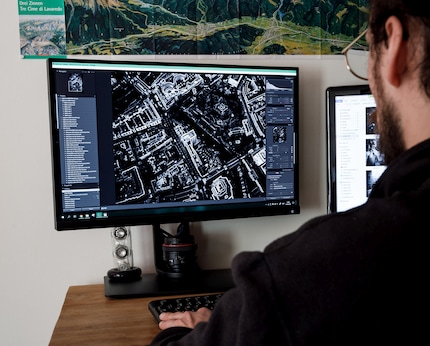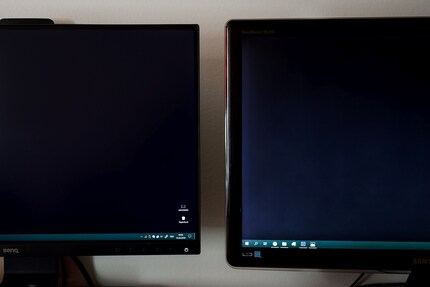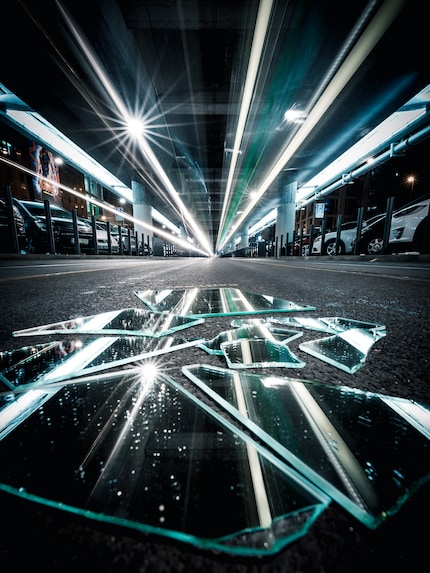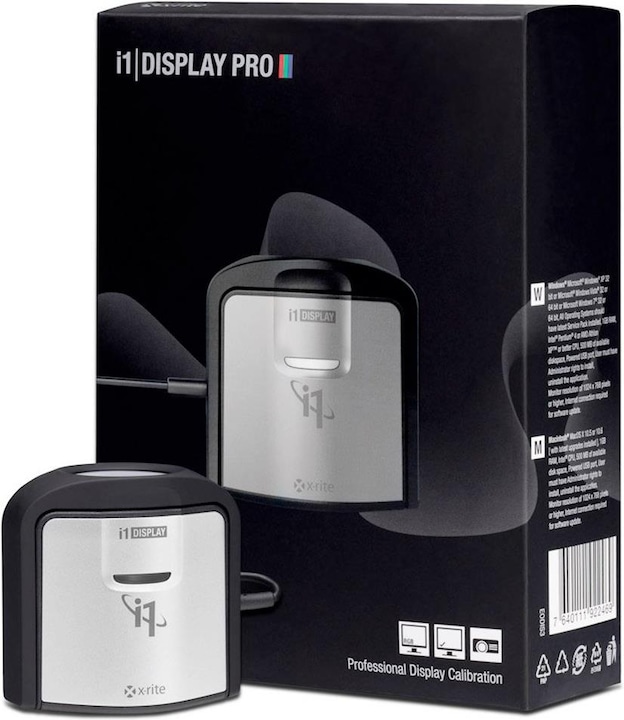

Theory vs. practice: Photographer tests photographer monitor
Andrej has a great passion for photography. He has now switched from an older office monitor to a new screen specially designed for graphic designers and photographers. I wanted to know how this would benefit him in everyday life.
Andrej Barnes works as an Account Manager at Digitec Galaxus AG, which means he looks after business customers. But that's not important here. What is important is that Andrej takes photos. A lot, with pleasure and well. And he wants a new screen.
As a photographer, Andrej has constantly developed and upgraded his equipment. His Samsung SyncMaster S27A350H from 2011 no longer meets his requirements. On the one hand, the screen is simply no longer up to date, and on the other, it is not a specialised graphics monitor. So Andrej picks up the BenQ SW271, a monitor designed specifically for photographers and graphic designers. After a month of use, I ask him what it has done for him.

Better because it's newer - but that's not the only reason
The most obvious difference between the old and the new screen: The new one comes with UHD resolution (3840×2160 pixels), while the old one can only do full HD (1920×1080 pixels). Today's cameras have 20 megapixels and more - which means that even if you zoom in on the image, you still benefit from the 4K effect. For Andrej, the higher resolution is one of the most important advantages of the new screen. "It's particularly helpful when editing details," he says.

However, you don't have to buy a special photography monitor for this - UHD is now also available for very little money. The brightness values are very similar. The 350 cd/m² is a step forward compared to Andrej's old screen (300 cd/m²), and he is correspondingly enthusiastic: "The white is now really white." But even monitors designed for the office and reasonably priced can deliver this today.
What characterises a monitor for photographers anyway? One of the most important things is the ability to calibrate the hardware. With a tool like the x-rite system, you can in principle adjust the colour reproduction on any PC. However, with many monitors this is not possible directly, but only by controlling the graphics card, which has disadvantages. The BenQ photo monitor can be calibrated directly
.
Andrej notes that the colours now match the colours on his camera screen better. And the colour match with smartphone screens is also better. However, he also attributes this to the fact that the new monitor really displays black as black. Just as is the case on many of today's smartphones. The 2011 screen simply does not produce a deep enough black level, which means that photos on mobile phone screens inevitably look different to those on a PC.

Colour representation
A good black level is important for Andrej. He likes dark, bold shadows, but has a precise idea of exactly how dark they should be. His style and way of working is also a good example of the fact that it really depends on what kind of photos you take and for what purpose.
Andrej mainly prepares his photos for the web. In general, photos for the web should only contain colours that all screens can display. The BenQ SW271 covers 99% of the "Adobe RGB" colour space - that's much more than most office screens. They are in the region of 70% coverage. Andrej therefore processes his images as they are seen by others - i.e. with the sRGB colour space. Virtually all screens cover 99 to 100 per cent of this. This rules out any nasty surprises.
A part of Andrej's style is that he desaturates bright colours quite radically. This means that he very rarely gets into an area that is not covered by sRGB. As you can see from the following diagram, it is mainly maximally saturated green tones that cannot be represented by sRGB. Colours that hardly appear in his pictures anyway.

Andrej also prints photos, and Adobe RGB would definitely make a difference. However, due to his image style, Andrej has no problem working with sRGB here either. He is in a comfortable situation with his new screen: he could use Adobe RGB if he needed to. But it has never been until now.
When it comes to printouts, he has other problems anyway: "To put the finishing touches to the colouring, I'd have to be able to print my photos myself, in other words, have a high-quality photo printer."
At the moment, he has his pictures printed. This way, it is hardly possible to experiment until everything is just right.
The ambient light
Colours, brightness, contrast - it all depends on the light in the room. The BenQ SW271 therefore comes with a light protection screen that blocks light coming in from the side.
This is supposed to be about Andrej's photo monitor, but at this point I can't resist a little off-topic rant:
What exactly are screen manufacturers trying to tell us when they only equip graphics monitors with a bezel? That the sensitive little graphic artists have particularly sensitive eyes that need to be protected, while the ordinary office worker doesn't give a damn if the sun shines on their screen all day? At my workplace, the sun dazzles me in the morning by reflecting off the window front opposite, at lunchtime via the window front from diagonally behind and in the evening by direct incident light. The experience is completed by an intelligent building control system that raises the sun blinds if the wind is too strong. It's a nightmare, regardless of whether I'm a photographer, tech editor or key account manager. So: blinds for everyone, now (and a fruit basket)!
Back to Andrej. He can adjust the light in his home so that nothing dazzles. He does that too. The light is always constant in his home anyway, so the glare is not so important. But it's still a nice bonus. Incidentally, it can also be pulled over the screen when it is rotated by 90 degrees. Another feature that Andrej doesn't need ...
The BenQ SW271 does not have a brightness sensor to regulate the light automatically. In constant room light in combination with the bezel, this is not necessary - not even for perfectionists. The feature is particularly common on notebooks, smartphones and TVs, and less so on PC screens. And even there you will find it mainly in the "entertainment" sector.
Conclusion
One thing is clear: the new screen is a huge improvement for Andrej, and he wouldn't want to go back to the old one under any circumstances. What is a little less clear is whether it really should have been a special monitor for professional photographers. After all, UHD resolution and a high brightness value are now also available on inexpensive office monitors. Andrej doesn't need much of what the BenQ SW271 can do beyond that - at least not yet. But there are one or two advantages that he is very happy about. Above all, he emphasises the even illumination and the deep black level. And the option of hardware calibration takes him a big step forward in terms of colour consistency.
My interest in IT and writing landed me in tech journalism early on (2000). I want to know how we can use technology without being used. Outside of the office, I’m a keen musician who makes up for lacking talent with excessive enthusiasm.




